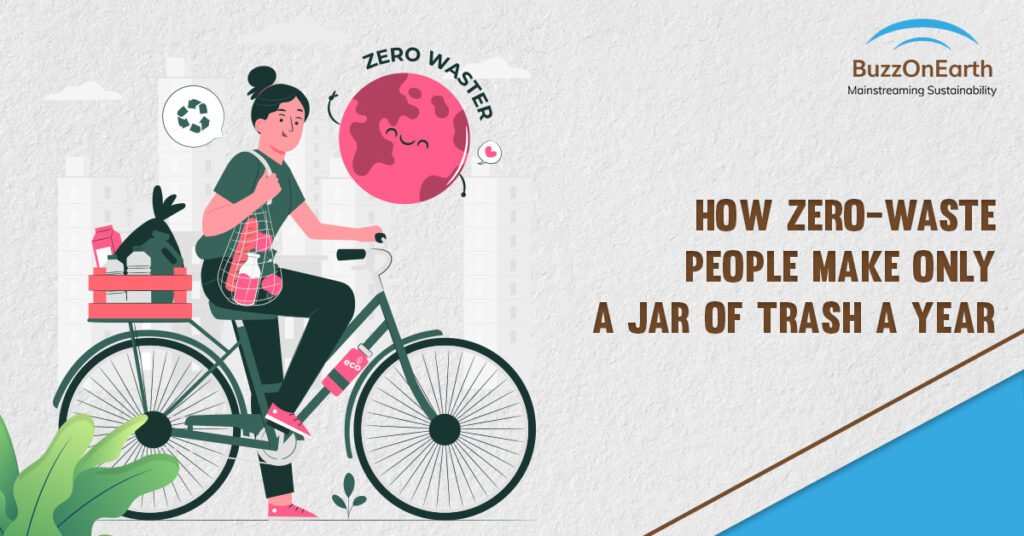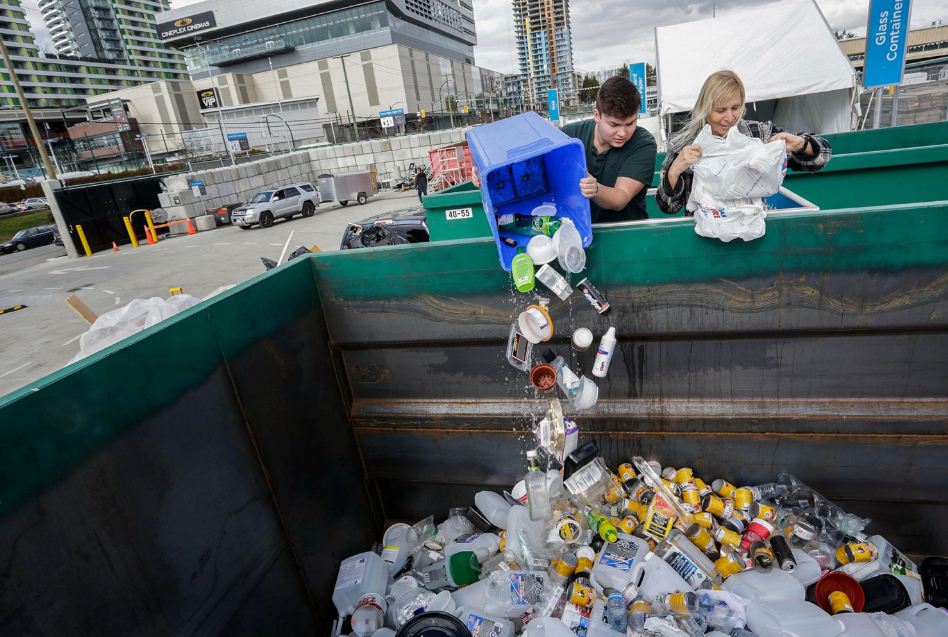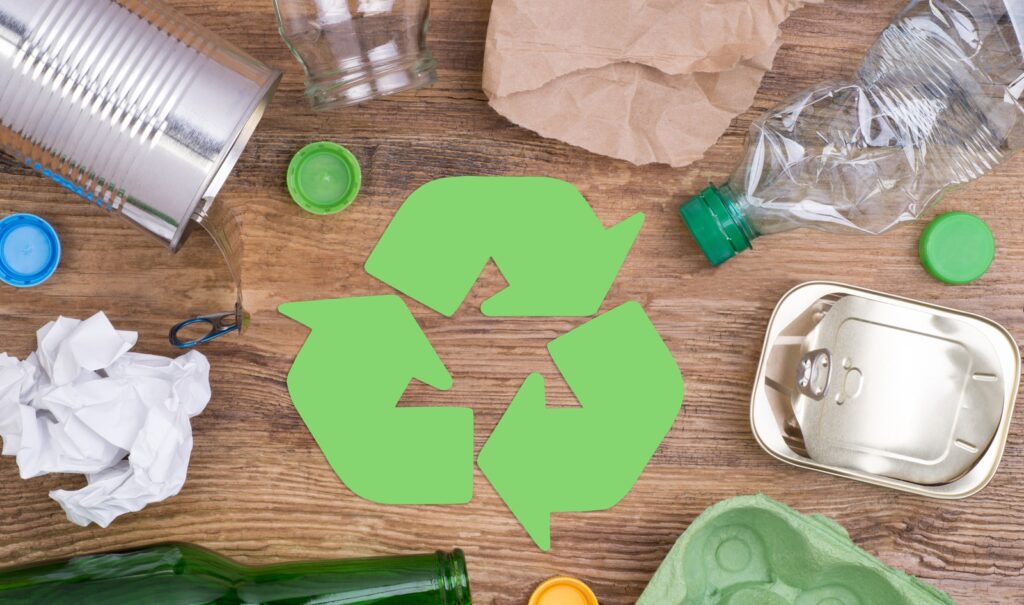
(Recycling and Composting) According to World Bank analysts, the world produces at least 3.5 million tonnes of plastic and other solid garbage every day, ten times the quantity produced a century ago. The United States is the world’s garbage king, creating 250 million tonnes each year—roughly 4.4 pounds of rubbish per person per day. But with this, there is also a community that is a part of the zero-waste movement.
Although, recycling and composting is one of how a zero-waste environment can be achieved. But some people go beyond this and put all their yearly trash into just one mason jar by adopting a modern minimalist way of life. This way, they save time and resources and lead a healthy lifestyle. Below, we provide you with real people who have adopted the zero-waste strategy and helped the environment.
How Zero-Waste People Are Making Only A Jar of Trash A Year
Kathryn Kellogg is one of those youngsters who has shrunk her trash pile—anything that hasn’t been composted or recycled—to the point that she can put two years’ worth of garbage into a single 16-ounce jar. In the meantime, the average American generates 1,500 pounds of garbage every year. Kellogg is one of the numerous zero-waste bloggers who document their efforts and provide practical advice and support to anyone interested in adopting a zero-waste lifestyle.
Her blog, goingzerowaste.com, and Instagram account have grown to 300,000 monthly readers in three years. As a result, she believes many individuals are ready to reduce their waste. She does not, however, want people to become obsessed with cramming all of their rubbish into a jar. According to her, zero-waste is all about reducing waste and making better choices in your life. “Just do your best and buy as little as possible.”
There is a thriving zero-waste community online that shares ideas, problems, and support for individuals dealing with unfriendly people who think it’s strange to be concerned about trash. “When you try to do things differently, you run the risk of being rejected,” Kellogg adds.
“However, using a cotton towel instead of a paper towel to wipe up a kitchen accident is not a radical act.” Many of the solutions to waste reduction are based on habits that existed before plastics and disposable goods. Consider cloth napkins and handkerchiefs, cleaning solutions such as vinegar and water, glass or stainless-steel containers for leftovers, and cloth supermarket bags. ( recycling and composting)
Rachel Fellows of Cincinnati took more than a few efforts in January 2017 to reduce her waste to one bag for the year. The influence it had on Felous’ life astounded and delighted her. “It’s been fantastic going zero waste,” she says. “I discovered an incredible community, met new friends, and new prospects have presented themselves,”
Fellows, a nature enthusiast who cares about the environment, hadn’t given much mind to how much waste she made until she relocated. She noticed how much stuff she’d accumulated at that point, including a dozen half-used shampoo and conditioner bottles.
She committed to be more conscious of her environmental impact after reading an article on zero-waste. Fellows also uses Instagram to document her trash-cutting efforts, including her troubles, setbacks, and victories. Organic waste makes up 75 to 80 percent of all domestic trash, which allows for recycling and composting, and transforming into the soil. As an apartment resident, Fellows disposes of her organic waste by freezing it. She brings her frozen lump to her parent’s house once a month, where it is scooped up by a nearby farmer to feed animals or compost them. If the organic trash were dumped in a landfill, it would most likely not compost because there isn’t enough air circulation. Fellows, who run her web design and photography business out of her house, encourages others to take little effort toward zero waste and be kind to themselves. It takes time to change one’s lifestyle; it does not happen suddenly. ( recycling and composting)
More Success Stories

Shawn Williamson has been doing this for eleven years. Williamson stays toasty inside watching hockey on TV while his neighbors in the suburbs outside of Toronto haul three or four bags of trash to the curb on frigid winter nights. In those ten years, Williamson, his wife, and their daughter have only hauled six bags of trash to the curb. “We lead a quite ordinary existence. Instead, he says, “We’ve merely eliminated waste.”
He adds that, contrary to popular belief, reducing waste isn’t difficult. “We buy in bulk to save money and time by reducing the number of trips to the store,” says the shopper.( recycling and composting) )
Williamson, a sustainability-focused business consultant, says his goal is to be less wasteful in all facets of life. “It’s a philosophy of always seeking better ways to accomplish things. Of course, it helps that his neighborhood has an excellent recycling and composting program for plastics, paper, and metals.
He has space in his backyard for two small composters—one for summer and one for winter—that create plenty of rich soil for his garden. He shops carefully for everything else to reduce waste, and he points out that throwing things out costs money: packing raises the cost of the goods, and then they pay for package disposal in their taxes.
Buying locally makes it easy to buy unpackaged goods and other things, such as meat and soap. When he doesn’t have an option, he abandons the packaging at the checkout counter. Many stores can reuse or recycle it, and putting it on the shelf communicates the message that many customers don’t want their avocados wrapped in plastic.
Lauren Singer, another zero-waste enthusiast, has made trash in the last four years that can fit into a 16 oz mason jar. She claims that, compared to the average American, who produces 4.5 pounds (two kilos) of rubbish every day, she has saved almost 6,000 pounds (2,720 kg) of waste from landfills.
She resorts to recycling and composting as a last choice. She strives to avoid packaging at all costs. The singer has become a waste-free specialist, eschewing packaging and manufacturing her products. Fruit and vegetable stickers can’t be recycled, and even though Singer only buys garments from second-hand stores, the bits of plastic linking the price tags end up in the jar as well. (recycling and composting)

Conclusion
The landfill problem can be fixed in part by encouraging people to reduce their trash. The most straightforward approach to starting living a sustainable lifestyle is to begin simply. You must make the first action, no matter how tiny, whether it’s drinking from a reusable bottle or going to the farmers’ market. Second, go through your garbage and see what you’re discarding.
To avoid food growing moldy, try doing modest, regular shops if there is a lot of food waste. Third, alter your product selection. Brush your teeth with a bamboo toothbrush, wash with hard soap instead of bottled soap, and clean your house with vinegar rather than commercial chemicals. You might even find that these solutions are less expensive. visit Buzzonearth

